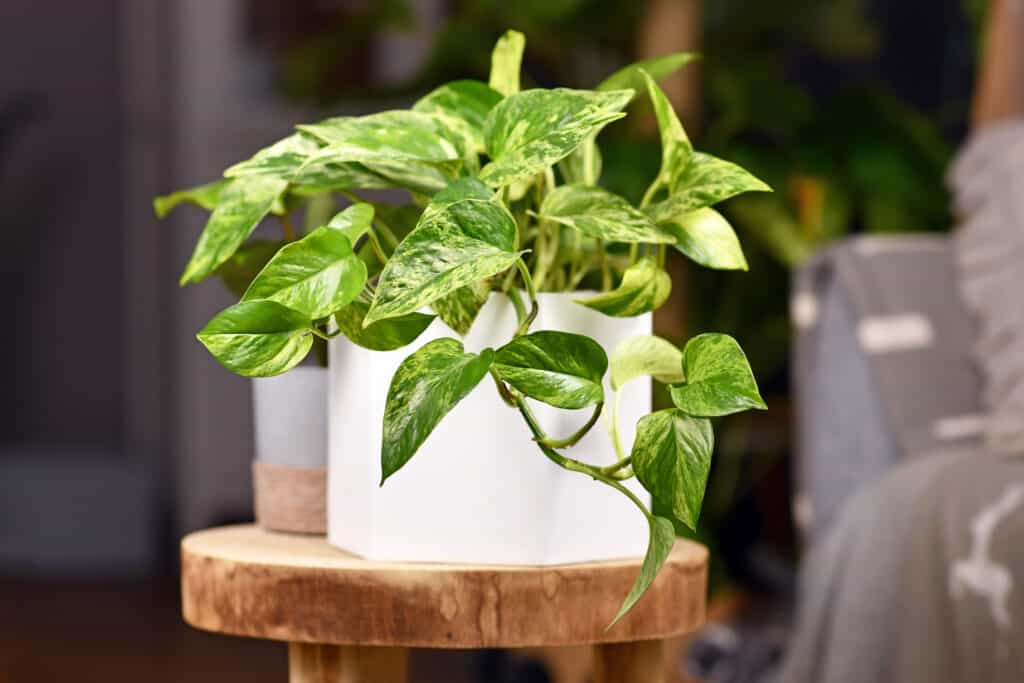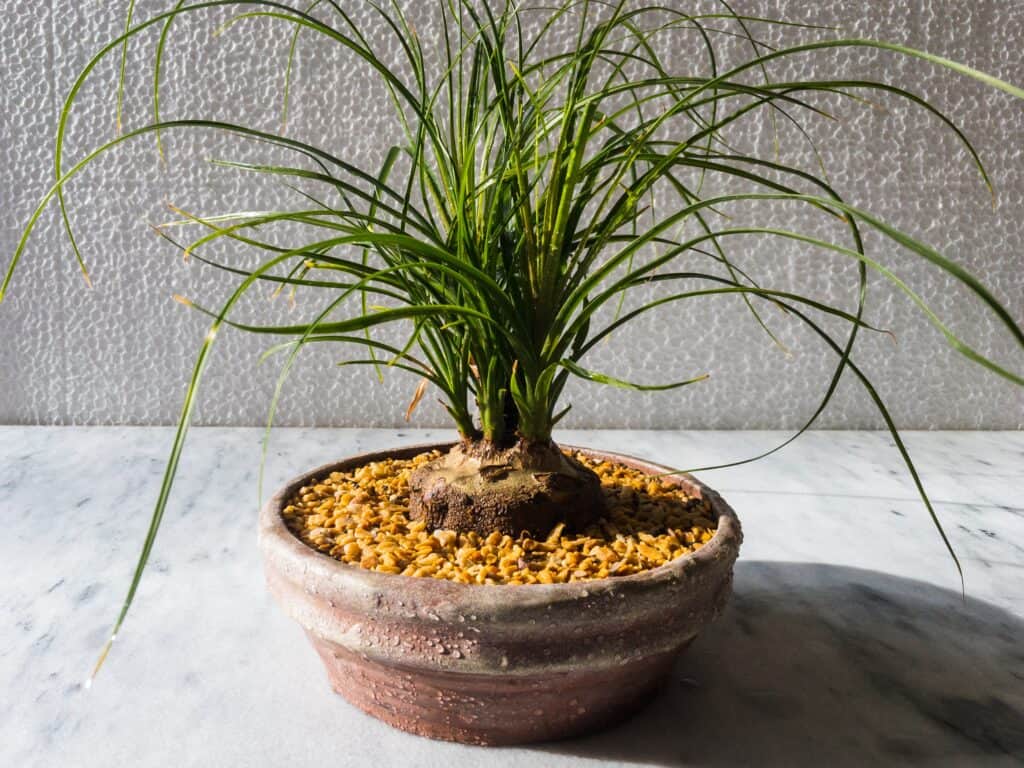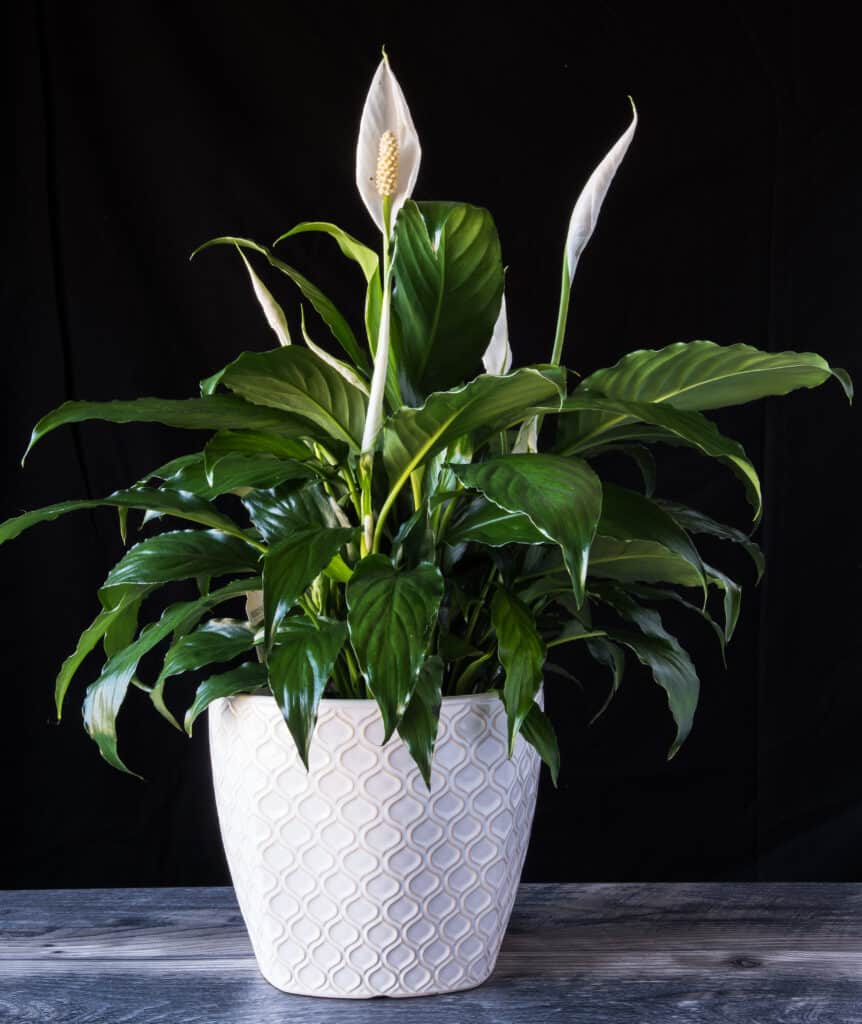Adding houseplants to your home can easily add instant color and a calm homey feeling. But if you are new to growing plants, you should start with something easy to grow while learning the ropes. All of these plants are grown indoors in the warm tropical environment of your living room, kitchen or bathroom. They are all easy to find in any store that sells plants. You can find them at plant nurseries, online retailers, florist shops, and grocery stores.
What makes a plant nearly impossible to kill? Being highly adaptable to many different types of indoor lighting situations is a big help. Plants that thrive on neglect are also nearly impossible to kill. We also listed several plants that store water in their roots and leaves, as they do not need frequent watering. Here, we will list the easiest-to-grow and hardest-to-kill plants suitable for beginner gardeners.
1. Pothos
The scientific name is Epipremnum aureaum. It also goes by pothos, devil’s vine, devil’s ivy, and golden pothos. Pothos has beautiful trailing stems and heart-shaped leaves that come in golden, neon, white, green, or variegated. Many home gardeners try to collect them all!
Healthy pothos plants can grow vines up to thirty feet in length. You can cut the ends off of long stems and propagate them in water for an endless supply of free plants. You can grow them on a windowsill, trailing along a wall, growing up a pole, or just about anywhere.
Pothos tops the list as one of the hardest plants to kill because it thrives on neglect. It will adapt to almost any light condition and can be grown in ordinary potting soil. You can fertilize pothos or not, and they will keep growing faithfully for years. The best part is that it prefers to be allowed to dry out in between waterings completely and then thoroughly drenched. Watering is usually a chore that only comes up once every month or more.

Pothos plants grow in almost any condition and are very low-maintenance.
©Firn/Shutterstock.com
2. Snake
The scientific names for this plant is Sansevieria trifasciata and Dracaena trifasciata. It is commonly called snake plant, mother-in-law’s tongue, spear plant, and bowstring hemp.
These lovely tropical plants have long, sword-like dark green leaves with yellow variegation. Snake plant is another hard-to-kill member of our list because it needs infrequent watering and is adaptable to many light conditions. Let your snake plant dry out completely in between waterings, and then give it a deep soak. It will adapt to low light conditions and even fluorescent office lighting.
3. Spider
The scientific name for this plant is Chlorophytum comosum. The most common names you will hear are spider plant and ribbon plant. It grows strappy grass-like leaves and can be solid green or variegated green and white.
The name spider plant comes from the plantlets hanging off the mama plant by runners. These have their own root system, and you can sever them from the mother plant and put them in a separate pot for an endless supply of free plants to give away (or crowd your greenhouse with).
Spider plants have thick, fleshy roots that hold water, so they prefer to be allowed to dry out before watering. Too much water will rot the roots. Spider plants also prefer indirect light. Direct light on the leaves will burn the leaf tips, turning them brown.

The name spider plant comes from the plantlets hanging off the mama plant by runners.
©Bozhena Melnyk/Shutterstock.com
4. Aloe
The scientific name for this plant is Aloe barbadensis. It is called aloe, burn plant, or burn aloe. The Aloe plant is another hard-to-kill houseplant. Aloes grow in a cluster around a central stem in a rosette pattern. The tall spikey leaves of aloe are filled with gel.
Aloe is a succulent plant, meaning that it is made of thick, fleshy parts that retain water, ideal for drought conditions in the desert where it grows naturally. In your home, this means that it requires bright light and infrequent watering.
Provide a free-draining cactus/succulent potting soil and a sunny window. If you meet these conditions, your aloe will provide you with yearly offsets. More free plants!
5. Dragon Tree
The scientific name for this plant is Dracaena marginata. People commonly call it dragon tree, Spanish dagger, dragon plant, or Madagascar dragon tree. Dragon tree is fun to grow indoors because they can get up to six feet tall!
Dragon tree has a thick trunk and a tree-like appearance, with tufts of glossy arching leaves that are deep green with red margins. Madagascar dragon tree can tolerate many temperatures and adapts well to growing indoors. It prefers bright indirect light and rich, well-draining soil. Water your plant when the soil is 50 percent dry. Dragon trees are pretty deep-rooted, so plant them in a deep pot. They rarely need fertilizing and are not fussy about humidity.

Dragon trees prefer to be deeply rooted in an environment with lots of sunlight.
©Grumpy Cow Studios/Shutterstock.com
6. Chinese Evergreen
The scientific name for this plant is Aglaonema. People commonly call them Chinese evergreen plant, golden evergreen, and poison dart plant. Chinese evergreen plants grow to just under two feet tall indoors. They have green leaves that are between four and eight inches long and have lovely silvery gray markings.
Chinese evergreen is long known for being a tough cookie. It will sit on your desk or in the corner of the living room and slowly grow and look lovely with no extra care. It will grow best in bright indirect light but can adapt to lower light conditions. Keep your Chinese evergreen evenly moist by letting the top two or three inches of soil dry in between waterings. They aren’t a fan of fertilizer, so only feed them once per year.
7. Ponytail Palm
The scientific name for this plant is Beaucarnea recurvata. People call it a ponytail palm, bottle palm, or elephant‘s foot tree. Ponytail palm plants have a large, swollen base that retains water for long periods. The enlarged base does look a bit like an elephant’s foot. At the top of the trunk is a palm-like cluster of leaves that are narrow and strap-like and curve downward with gravity, much like a ponytail.
The ponytail palm has a lot of outstanding characteristics. For one thing, it can grow to between four and eight feet tall indoors! Growing this tall will take many years, but it is worth the wait!
Do not overwater your ponytail palm; that is truly the best way to kill it. Plant it in cactus/succulent potting soil, and place it in a bright spot without direct light and water when the pot is very light and dry.

Ponytail palm plants has a large, swollen base that retains water for long periods
©Bilalstock/Shutterstock.com
8. ZZ Plant
The scientific name for ZZ plant is a doozy; Zamioculcas zamiifolia. No wonder most people prefer to call it a ZZ plant, zuzu plant, eternity plant, or emerald palm. The ZZ plant has thick rhizomatous roots that store water for the plant to use later. From the roots grow long green stems that are thick and fleshy. Out of the stems sprout thick, glossy leaves that are oval-shaped and shiny. ZZ plants grow up to three feet tall indoors and equally wide.
ZZ plants are master adapters. They can live in moderate to indirect sunlight, withstand drought, and rarely need fertilization.
9. Peace Lily
The scientific name for this plant is Spathiphyllum. Most people call it a peace lily, white sails, or spathe flower. Peace lilies are great plants for beginners, especially if you are looking for a plant that can flower indoors!
Peace lilies have deep green leaves and tall flowers that grow from the middle of the plant like flags. They grow to a maximum height of four feet indoors.
Peace lilies happily grow inside the house as long as they are provided with indirect lighting (bright light burns the leaf tips) and are allowed to dry out between waterings. Peace lilies are pretty great at communicating when they need water, as they dramatically wilt when thirsty.

©Simone O/Shutterstock.com
10. Flamingo Flower
The scientific name for this plant is anthurium. People call it flamingo flower, flamingo lily, or painter’s palette. It is famous for its continuous indoor bloom!
It has bright green foliage contrasting with waxy, palette-shaped red or pink flowers. Flamingo flowers do best in a chunky potting mix like one made for orchids. They cannot tolerate bright light, so place them in a bright indirect lighting situation for maximum blooms. Water your anthurium when it is 75 percent dry and fertilize with a weak solution once in spring and again in summer. Anthuriums need very little attention in winter when they are dormant.
Here is a Summary of 10 Houseplants that are Nearly Impossible to Kill
- Pothos
- Snake plant
- Spider plant
- Aloe
- Dragon tree
- Chinese evergreen
- Ponytail palm
- ZZ plant
- Peace lily
- Flamingo flower
Next Up:
- Dracaena Trifasciata vs. Sansevieria. Spoiler alert, they are the same plant!
- 8 Houseplants That Grow in Water. Most of these nearly impossible-to-kill plants are also easy to propagate in water.
- 10 Plants That Like Coffee Grounds. Here is a cheap and easy nitrogen fertilizer for your plants.
The photo featured at the top of this post is © Mallmo/Shutterstock.com
Thank you for reading! Have some feedback for us? Contact the AZ Animals editorial team.







